Fatehpur Sikri (Hindi: फतेहपूर सिकरी, Urdu: فتحپور سیکری) is a city and a municipal board in Agra district in the state of Uttar Pradesh, India. The historical city was constructed by Mughal emperor Akbar beginning in 1570 and served as the empire’s capital from 1571 until 1585, when it was abandoned for reasons that remain unclear. The surviving palace and mosque are a tourist attraction and a UNESCO World Heritage Site.

History
Akbar had inherited the Mughal Empire from his father Humayun and grandfather Babur. During the 1560s he rebuilt the Agra Fort and established it as his capital. With his Hindu wife Mariam-uz-Zamani he had a son and then twins, but the twins died. He then consulted the Sufi Saint Salim Chishti from the Chishti Order who lived as a recluse in the small town Sikri near Agra. Salim predicted that Akbar would have another son, and indeed one was born in 1569 in Sikri. He was named Salim to honor the saint and would later rule the empire as Emperor Jahangir. The following year, Akbar, then 28 years old, determined to build a palace and royal city in Sikri, to honor his pir Salim Chishti. The tomb of Salim Chishti, “Salim Chisti Ka Mazar” was built there within the grounds of the Jama mosque.
The name, Fateh is of Arabic origin and means “victory”, also in Urdu and Persian; Mughal Emperor Babur defeated Rana Sanga in a battle at a place called Khanwa (about 40 KM from Agra).
Fatehpur Sikri shared its imperial duties as a capital city with Agra, where a bulk of the arsenal, treasure hoards, and other reserves were kept at its Red Fort for security. During a crisis, the court, harem, and treasury could be removed to Agra, only 26 miles away, less than a day’s march.
It is at Fatehpur Sikri that the legends of Akbar and his famed courtiers, the nine jewels or Navaratnas, were born. The legendary musician Tansen is said to have performed on an island in the middle of the pool Anup Talao. A strong belief comes across from generations that a tunnel from here stretches to Delhi and from there to Lahore and on the other end to Agra. Due to nonmaintenance, the tunnel had been closed in 1952 at approx 500m.Innovations in land revenue, coinage, military organisation, and provincial administration emerged during the Fatehpur Sikri years.
Fatehpur Sikri was abandoned in 1585 and the capital moved to Lahore. The reasons for this remain obscure; it is possible that water sources dried up or that Akbar needed to be closer to invading Persian and Afghan armies.
Important buildings
The buildings of Fatehpur Sikri show a synthesis of various regional schools of architectural craftsmanship such as Gujarati and Bengali. This was because indigenous craftsmen from various regions were used for the construction of the buildings. Influences from Hindu and Jain architecture are seen hand in hand with Islamic elements. The building material predominantly used is red sandstone, quarried from the same rocky outcrop on which it is situated.
Some of the important buildings in this city, both religious and secular buildings, are:
- Anup Talao: A tank with a central platform and four bridges leading up to it.
- Buland Darwaza (Gate of Magnificence): One of the gateways to the Jama Masjid, a stupendous piece of architecture from the outside, gradually making a transition to a human scale in the inside.
- Diwan-i-Am (Hall of Public Audience): A building typology found in many Mughal cities where the ruler meets the general public. In this case, it is a pavilion-like multi-bayed rectangular structure fronting a large open space.
- Diwan-i-Khas (Hall of Private Audience): Famous for its central pillar with thirty-six voluted brackets supporting a circular platform for Akbar. It is here that Akbar had representatives of different religions discuss their faiths.
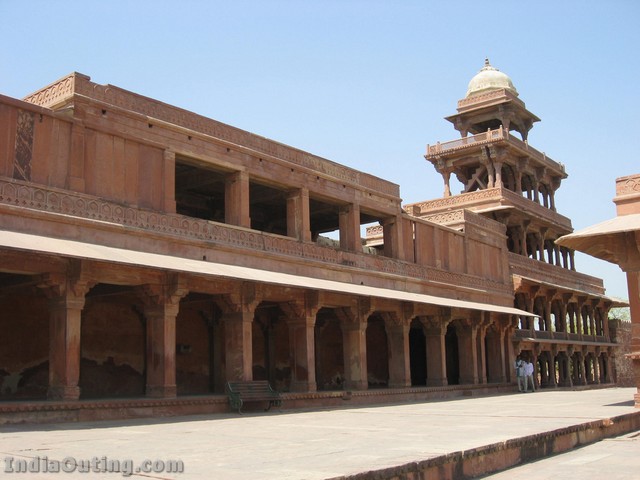
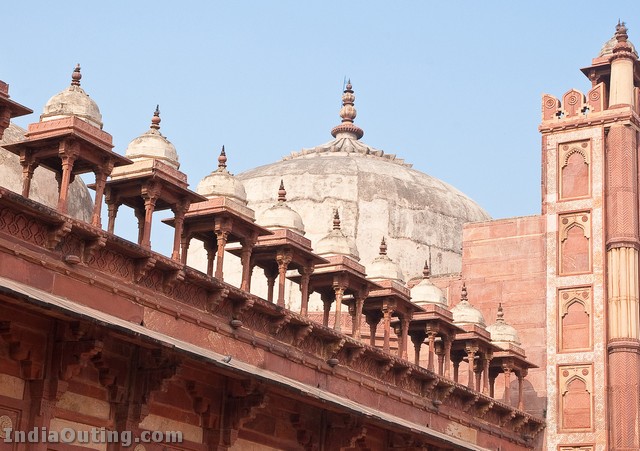
- Hujra-i-Anup Talao (Small Chamber of Anup Talao): Said to be the residence of Akbar’s Muslim wife, although this is disputed due to its small size.
- Jama Masjid (Grand Mosque): The mosque, built in the manner of Indian mosques, with liwans (aisles) around a central courtyard. A distinguishing feature is the row of chhatris (small domed pavilions) over the sanctuary.
- Mariam-uz-Zamani’s Palace: The building of Akbar’s wife shows Gujarati influence and is built around a courtyard, with special care being taken to ensure privacy.
- Naubat Khana (Drum House): Near the entry, where important arrivals are announced.
- Pachisi Court: A square marked out as a large sized board game (modern day Ludo) where live coins- people- participated.
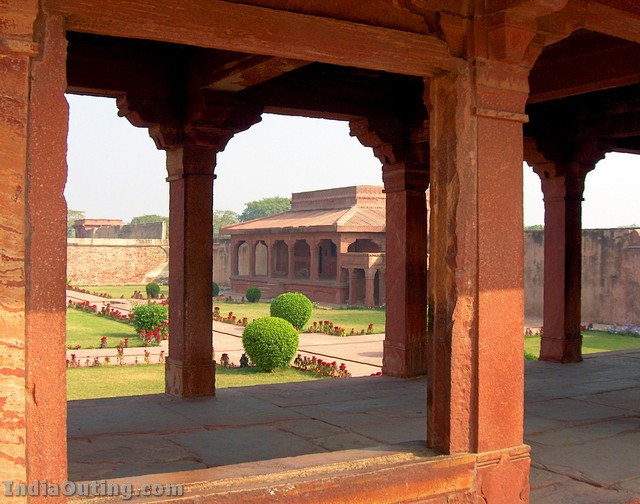
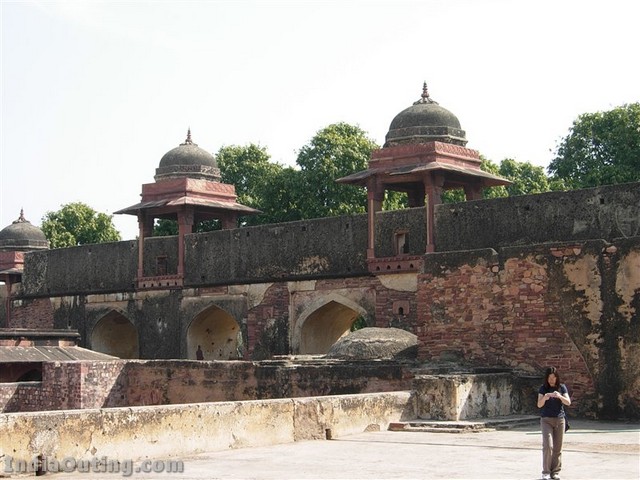
- Panch Mahal: A five-storied palatial structure. The bottom floor has 176 intricately carved columns.
- Raja Birbal’s House: The house of Akbar’s favorite minister, who was a Hindu. Notable features of the building are the horizontal sloping sunshades or chajjas and the brackets which support them.
- Sunahra Maken: The residence of Akbar’s Christian wife.
- Tomb of Salim Chisti: A white marble encased tomb within the Jama Masjid’s courtyard.
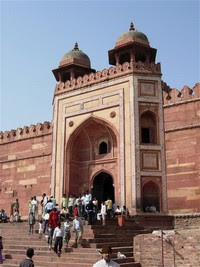

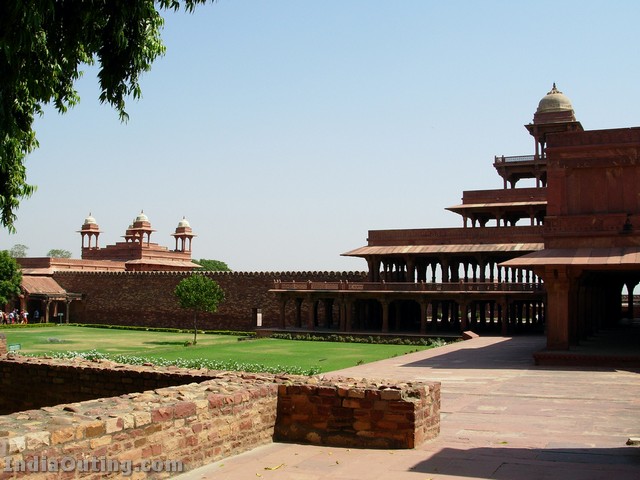
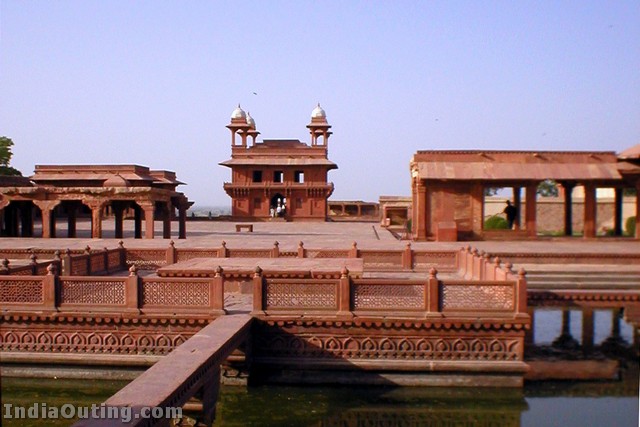
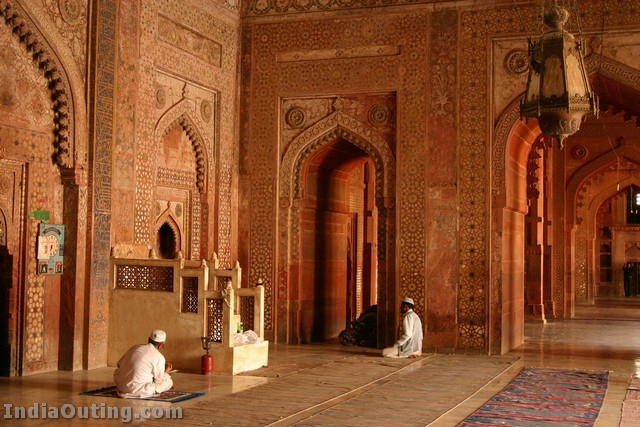
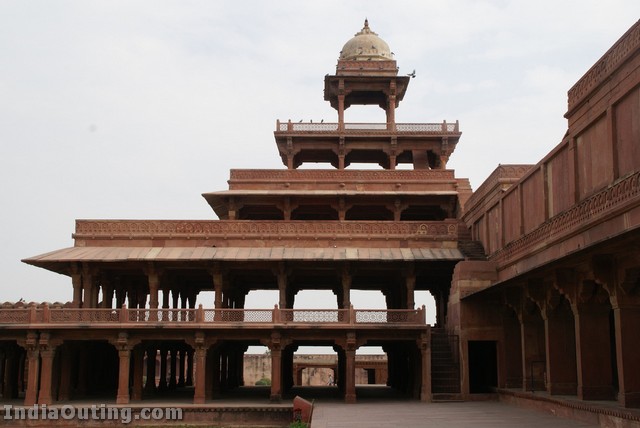
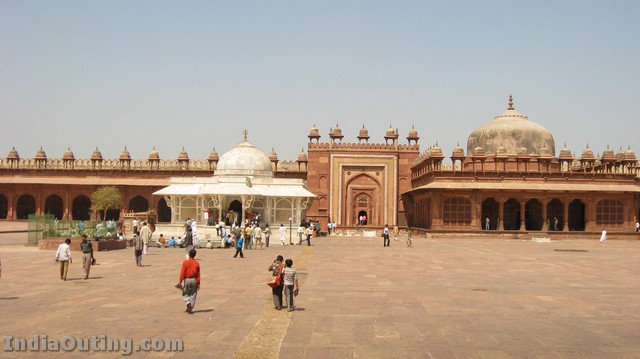




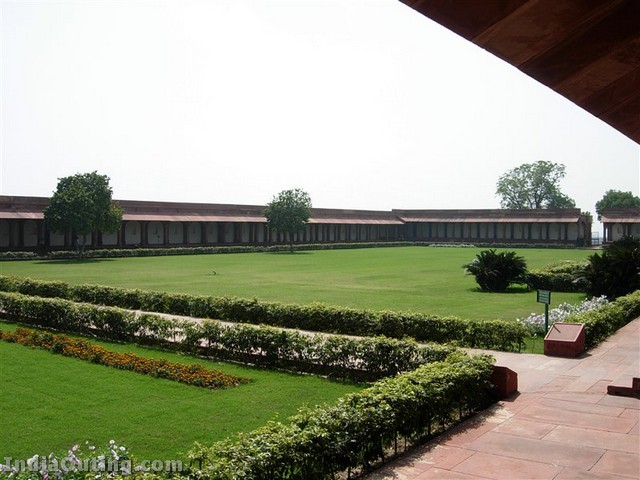
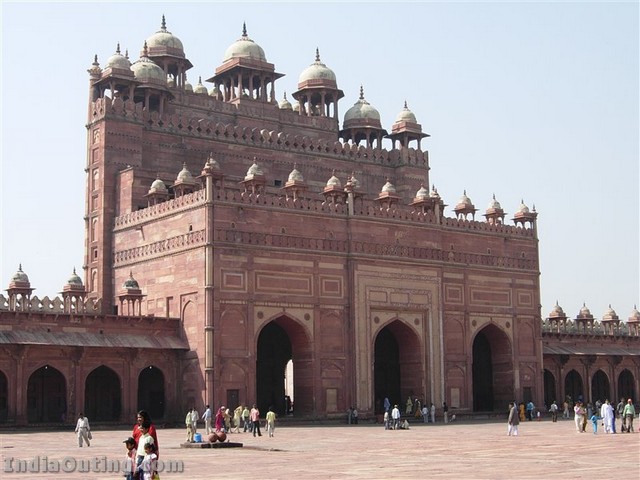

No comments:
Post a Comment